Sailing West Sumatra
If you would like to document and share your sailing adventures, use this link to create your free profile: SKIPPERBLOGS
We had completed all the required formalities to check into Indo, as described in our previous article, which can be viewed HERE
Now we were cleared in and permitted to explore this beautiful part of the world.
We had been advised that extensions on our visa should be applied for around 14 days before expiration, so we decided we would stay in the immediate vicinity and not wander too far away. Then once we had received the extension and our passports, we would have 6 weeks to travel out of Sabang, down Sumatra, and see how far we would make it before needing to turn around.
Maybe we should just quickly explain what we were doing in this part of the world, during the “wrong” season, and without a specific plan in mind. We knew we were going to be challenging ourselves, testing our skills, and seeing how far we could push Maia. This was going to be a proper test, a way to push ourselves and gain experience, a chance to be more than just coastal cruisers. This would be the first time we would attempt overnight sailing, without crew, through one of the busiest shipping lanes in the world.
Awaiting us, the promise of clear waters, beautiful remote coastlines, friendly and welcoming locals and maybe even opportunities to surf.
The distance from Langkawi to Sabang depends on which route you take. In a straight line, it's around 270 miles. For us, this was not an option, as we wanted to sail as much as possible and the wind direction would not allow us to sail directly to Pulau Weh. By sailing further South, we followed the shortest route to Sumatra and out of the shipping lanes as soon as possible.
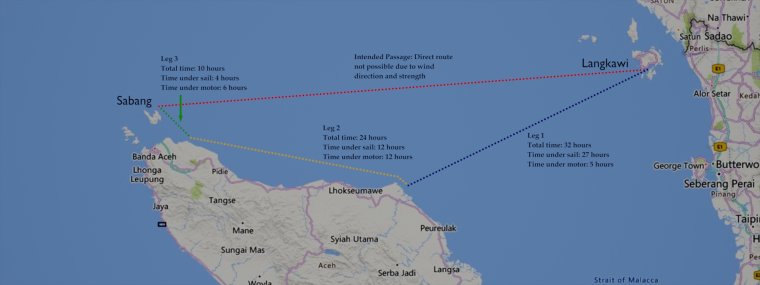
Armed with positive energy, motivated spirits and medium-sized hangovers, we departed from Rebak Marina, set sails for a closed-haul course and began the passage. As a personal preference, due to our reluctance to mess about on deck, we always set ourselves a double-reefed main and keep it that way. By doing this, we can avoid any sail changes in challenging conditions, and let's face it, the difference in performance is minor, and actually more comfortable. This applies only to long passages as we are only two on board and have to alternate shifts. We did encounter one early squall but the first real challenge involved our anchor. As our bow dipped below a wave, we scooped a floating log which snapped our anchor secure line and the anchor got washed out of the bow rail and off the roller. Fortunately, it did not drop far and we managed to get it back in place and secured.
After 32 hours, we reached Sumatra and were able to anchor in protected waters with good holding, allowing ourselves a good night's rest and ready to tackle leg 2.
The next leg took us North along the coast, staying away from the shoreline to miss all the fishing activity. This was another overnight sail, this time being chased by squall systems, one which spun us right around, and a wind change which stayed with us for the rest of the leg.
We made it to the tip of Sumatra the next morning and were looking forward to the last leg, sailing NW toward the island of Pulau Weh, and Sabang. It was not to be...
As luck would have it, the SW forecast turned out to be wrong by 90 degrees and we were facing straight into it.
Total distance to cover: 10 miles
Time taken to complete: 10 hours
Finally, just as the sun began to set, we entered Sabang and picked up a mooring. High fives and sunset beers...We had made it...
Follow the link at the start of this article for the check-in procedures. Once checked in, the adventure continues as follows...
Not far from the Sabang Harbour, we find our first anchorage, and when we say not far, we mean it, it's less than a mile away, and well protected. This is a good opportunity to enter an area using satellite images as electronic navigation can be a bit sketchy, and not too accurate. We anchored in good holding, in around 16m, with plenty of swinging room, and not many neighbours. There were some moorings available, but given our recent experience with moorings in this area, we put our faith in our anchor. This was a great place to unwind after crossing the strait, get ourselves and the boat back in order, and slowly plan our next move.
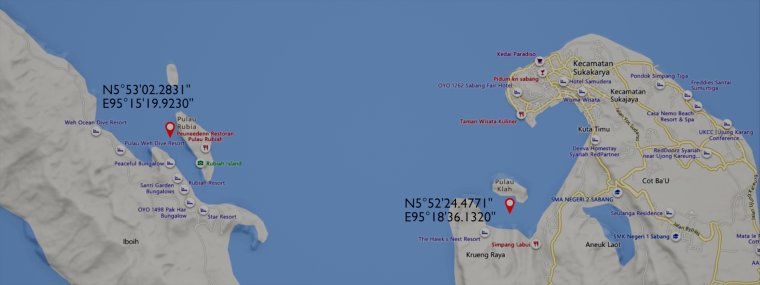
After consulting the Pilot, we decided to visit Rubiah Island, which is the next recommended stop on Pulau Weh. The Pilot promised great snorkelling in clear waters, and the many dive operators offer affordable rates to visit some of the great dive sites in the area. Please note: There used to be moorings in this area but these are no longer there. We anchored here for a week in 15-18m in sand, good holding, but make sure you do not anchor too close to the local tour operators. We actually asked where best for us to be and were directed a little north of the channel. The “wind bullets” can get a little crazy in here so make sure you are set firmly. Restaurants, stores and bike rental available at the nearby beaches. The water is clear, on some days we could see the bottom and you can spend days exploring the nearby snorkel sites. Spear-fishing is not permitted around Rubiah. The locals are amazing, friendly and welcoming. We had the best time.
Once our visas were extended and passports received, we could make plans to sail down the west coast of Sumatra. The winds around the tip of Sumatra were consistently moderate to strong, and combined with fresh currents, called for our timing to be precise. To give ourselves the best chance of making it through comfortably, we decided to tackle this in two legs.
We must, at this stage, give a huge shout-out to the following persons:
Rachel @ SEASPRAY YACHT SALES for assisting us with valuable info and guidance before and during our Sumatra trip.
Fred from SV Lara Pinta for advice in getting through the Raya.
Robbie from ANDERSSON MARINE for his online assistance to get minor issues with our diesel engine sorted.
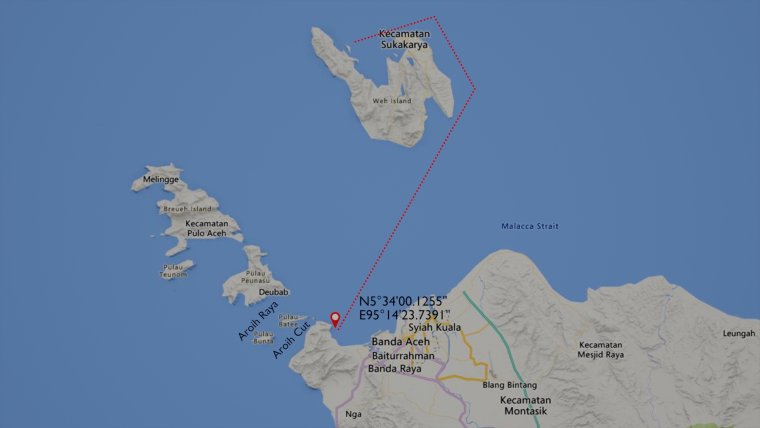
The next sheltered anchorage is a preferred stopover for yachts planning to round the tip and head down the coast. Lampageue allows you to check wind forecasts and tides, and pick the best times for sailing through the Aroih Cut or Aroih Raya. You want to be attempting this at slack tide with less wind. The Cut has the potential for serious conditions with The Raya slightly better, which is why we chose the easier option and headed for the Raya. Even though we timed it correctly, we were still slowed down to 0.5 Knots at one stage and unfurled the headsail to make it through. Next stop, Seudu...
Lhokseudu has good holding and is well protected from the wind and swell. Now we were well out of the tourist zone so English is spoken far less, but the local fishing community is extremely friendly and helpful. We rented a private scooter to drive to Banda Aceh for provisions, and limited only by our imagination and courage, managed to load that bike up.
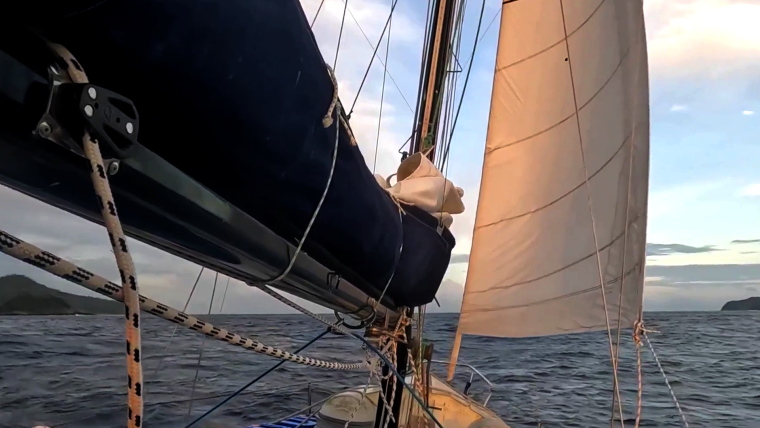
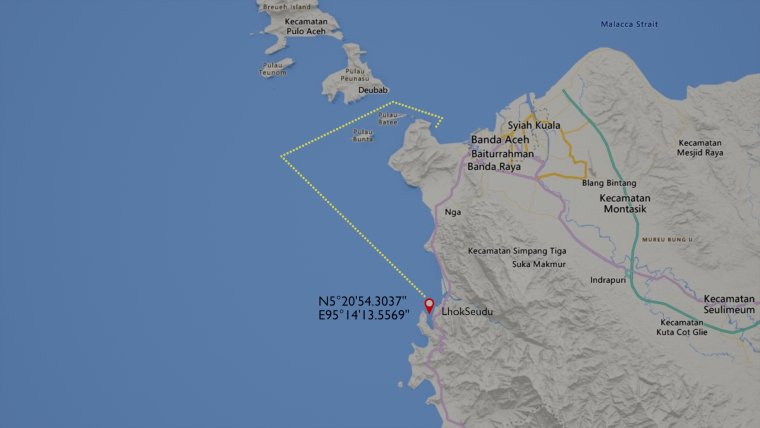
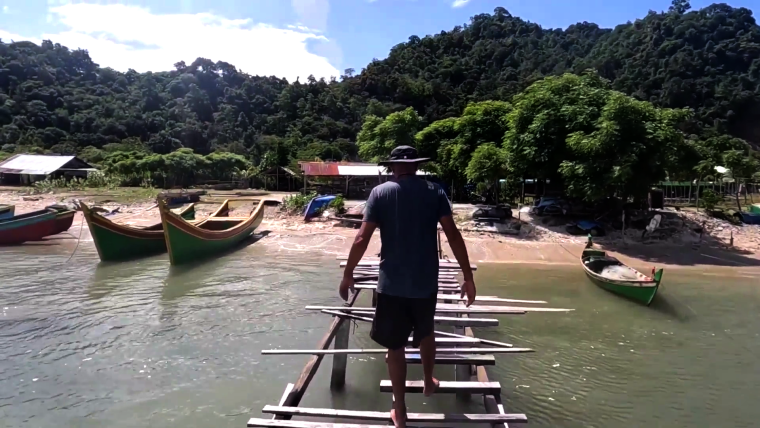
Now, we have to stress... All the sailing we had been doing up to Khokseudu had been bashing into strong winds so we contemplated making this anchorage our last stop down the coast. Our Plan B could be visiting other areas around Breueh and Weh. While discussing this option, a catamaran entered the bay and we decided to go say hello. We met Todd and Lattie, who have extensive experience of sailing Sumatra and were on a delivery. Not only did they offer great advice for expected winds further down the coast, but also gave us tips on stopovers and potential anchorages. Absolute legends, they informed us that the winds would die down by the time we reached the next stop south. So, we stuck to the original plan, and decided to head down to Pualu Raya.
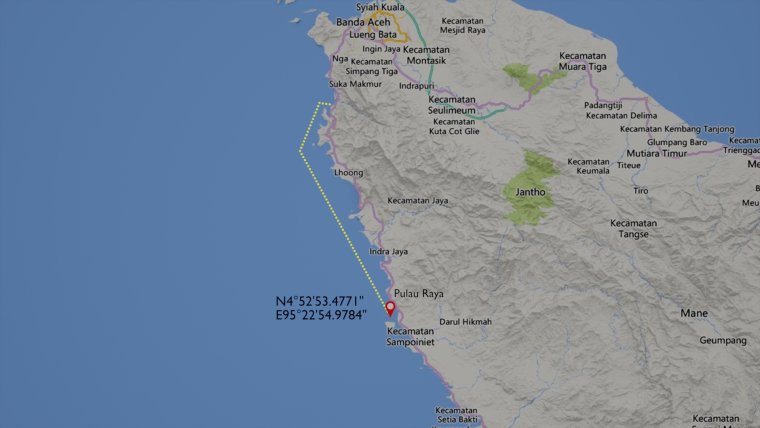
We managed to sail the first third of this leg, and as advised, the further south we got, the less wind we encountered. This was a welcome respite from the constant bashing we had endured up to this point. Pulau Raya was a good stopover, although a bit roly. There were warnings of congested fishing activities in this area, but we experienced none, just a few local fishermen sharing the anchorage for the night.
Next leg would take us down to Calang, which was planned to be the second-to-last stop before the long passage over to Simeulu. We went ashore for some provisions, including fresh tuna and visited the beach warungs for a bite and a chat. Lots of swell in the anchorage and not too comfortable.
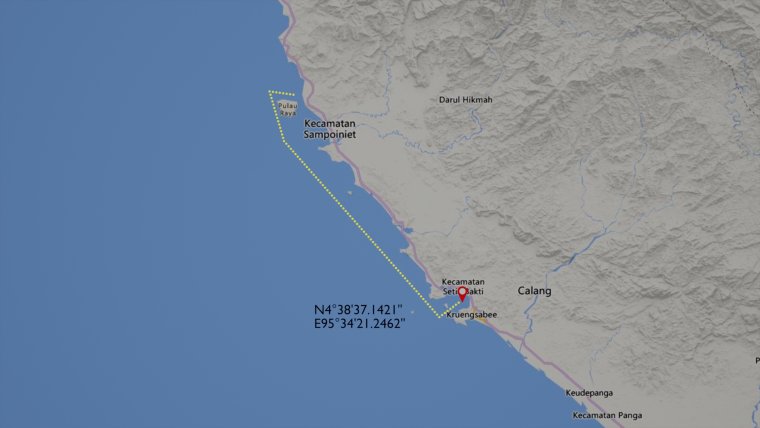
We worked out distances and realised that sailing across from Calang is not that much further than from the next intended stop. So we changed the plan and prepared for an early morning departure. With no wind on the forecast, this promised to be a smooth motor all the way to Simeulu.
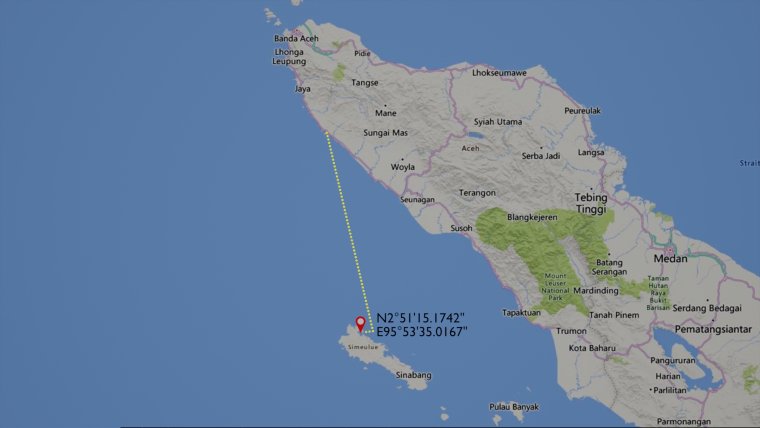
This was an overnight passage but we encountered no fishing activity and no other traffic. Our destination... Sibidong.
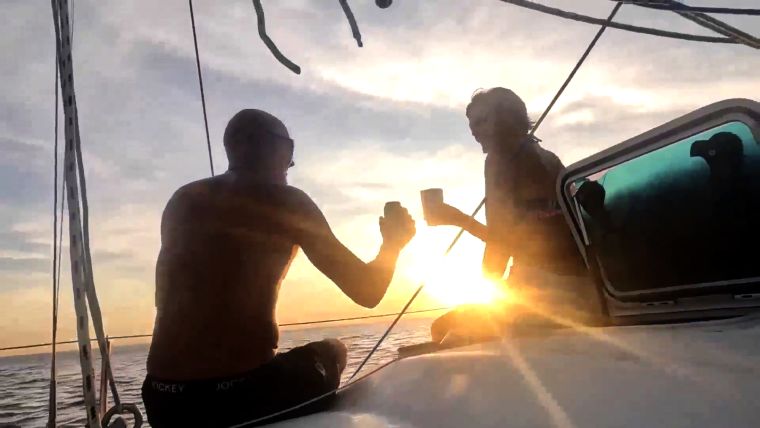
Sibidong is one stop that we would not do over. Not great holding, the charts are way off and not much room to move if a squall or Sumatra hits. Once you reach Simeulu, better to just keep moving on to Lekon.
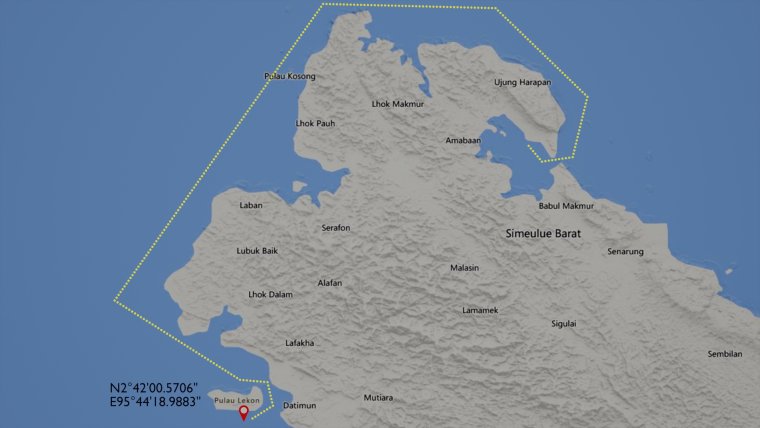
Once we rounded the northern tip of Simeulu, we could feel the ocean change as we were no longer protected from the swell, running SW. We had to keep a safe distance from shore and the breaking waves. We dropped anchor on the north side of Lekon, but were advised by a local fisherman, that there was more protection and holding on the south side. After consulting with Todd, who confirmed this, we made it through the channel and found a great anchorage as advised. During this leg, we also realised how much diesel we were using so would have to make a plan to refuel, or make this our last stop.
The Search for Diesel – An adventurous tale of two sailors and their quest to find fuel on a borrowed motorbike, with no cash.
6pm – After numerous visits by local fishermen to welcome us into their area, and armed with Google Translate, we find someone who looks like they might consider renting us a scooter. Most offered to bring diesel (solar) to us, but we tried to explain that we needed to find an ATM first.
7:20am – The next morning, we were woken up by someone calling out to us. Our “rental agent”, Adidol, had arrived. We tried our best to convince him that we needed to still have our morning coffee and that we would meet him at the beach, but he was having none of it. He was not going to let us go so easily. Reluctantly, and without breakfast, we tied his canoe to our boat and took the dinghy ashore. After a very wet landing, we made it to Adidol's house, three on a scooter with two jerry cans.
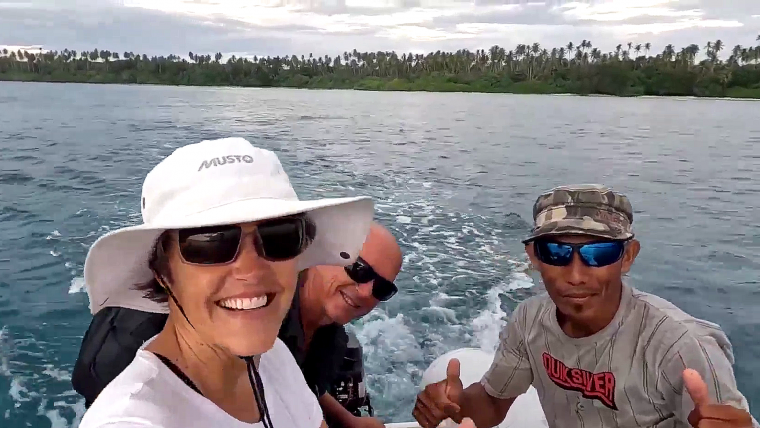
9:00am – We leave Adidol at his house and promise to return by the afternoon. He is taking the day off, no need to go fishing when you make a great payday renting out your bike to two complete strangers. He doesn't yet know that we have no cash, and if we don't find an ATM that works, we might have problems.
10:30am – We find our first ATM and the initial signs are not good. This particular bank has denied us multiple times in Sabang and Banda Aceh but we need to try. Denied.
12:30pm – We have now travelled far south, past the airport. The ride itself has been enjoyable and we are following Google Maps to what might be our last ATM option. We could have sailed here. We are renting a scooter to find diesel so that we can use that diesel to make it down here on our boat. Make sense? Didn't think so...
1:00pm – Success! Now at least we have cash and the next search can begin, looking for diesel, clean diesel.
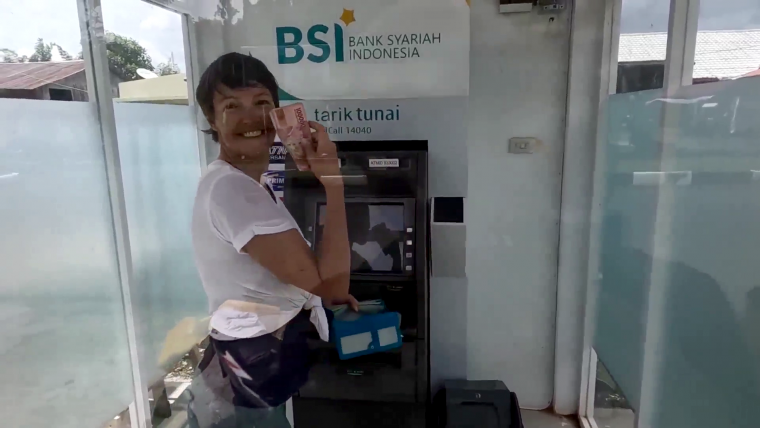
Indonesia is well-known for it's poor quality diesel. To find clean diesel, you need to find a filling station. All other diesel is sold by backyard merchants and store keepers, and the storage and transportation leads to contamination and “diesel bug”. Every filling station we tried would have a sign: “Solar Habis” which basically means, diesel finished.
2:00pm – We decide to head back to Lekon so that Adidol can try arrange diesel somewhere. It's our only option.
2:30pm – Success! As we make our way back north, we see a sign: “Solar”
It's a road stall but we stop and check it out. The diesel is clean and the price is good.
We top up our two jerry cans and cautiously set off, we are now heavier and dark clouds are forming.
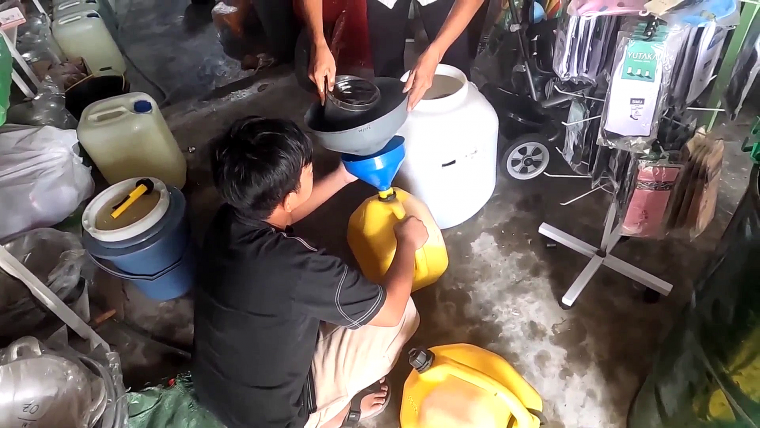
3:00pm – The rain forces us to take cover under a roadside stall. On the opposite side of the road is a coffee shop and we were called over by the locals to join them till the rain stops. We order coffee and have an enjoyable time “chatting” to the locals who are genuinely interested in meetings us and finding out what we are doing there, and more importantly, how we got there. We learn to count to ten in Bahasa and test the kids on their English. Truly a highlight of the trip.
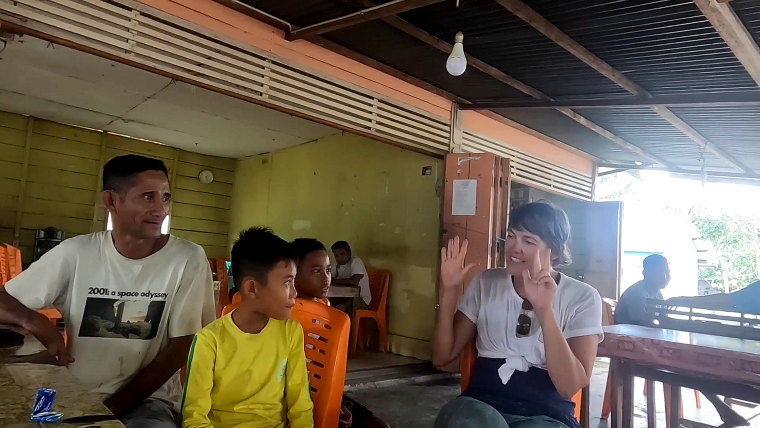
3:30pm – On the road again... Adidol must be worried. His bike is gone and his canoe is tied to a boat somewhere in the bay.
5:00pm – We now realise we have to try remember what his house looks like. Fortunately, we miss it only once, backtrack and there it is... Only, there's no Adidol. Grandma is watching the kids and Google Translate is not working. We head down to the beach and there he is, a look of relief and genuine happiness to see us.
6:00pm – We sit on the deck and enjoy a well-deserved cold beer. It's been a long day, and we agree, we can't do that again.
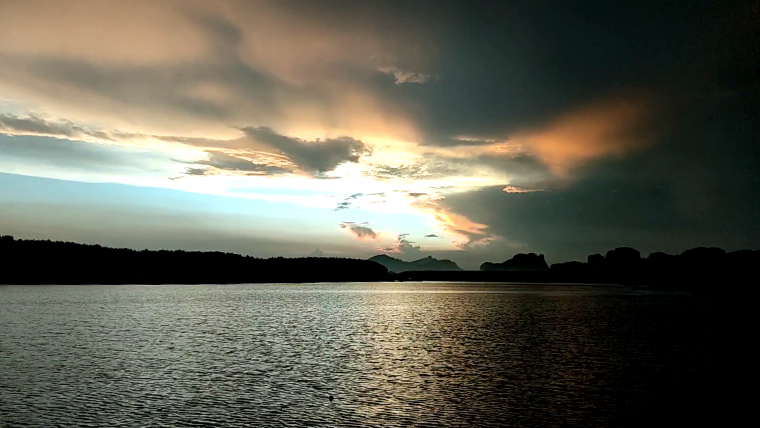
The decision has been made – we will stay here for a while, just enjoy the bay, and return to Sumatra when ready. The water is clear and cool, the sunsets beautiful and besides the occasional visit from local fishermen, we are alone. We do go ashore and find another 10 gallons of diesel (just to be sure), as well as some basic provisions. It was time to watch the forecasts and plan our trip back.
To break the first part of the passage up, we head to Panjang for a one night stopover. From there we will make our way back to Pulau Raya in one long, straight line.
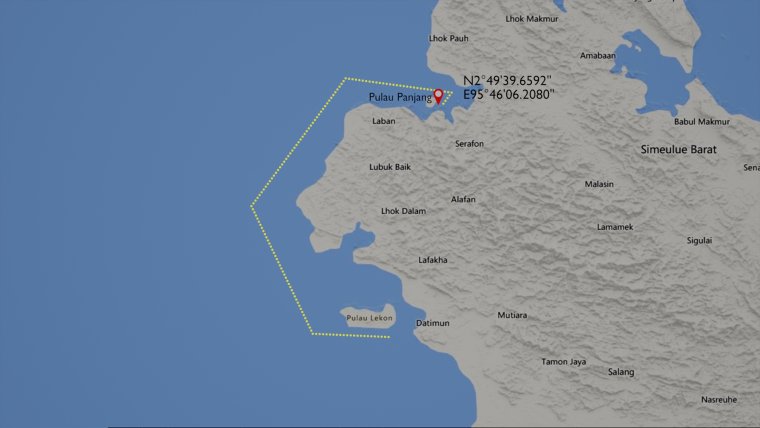
The anchorage at Panjang is very well protected. From the wind and swell that is. Not so much from mosquitoes. This is mangrove area and in the morning we were woken up by the sounds of a hundred mosquitoes trying to find a way into our boat. Yes, we could hear them. Luckily, our captain, me, had put up insect netting on all hatches and the companion way. So we huddled together till the blazing sun sent them into hiding and it was safe to emerge.
We pack out the spinnaker, the forecast showed 5-8 knots of wind straight from behind. We want to sail as much as possible as our fuel tanks are not even close to full. By all accounts, this should be an easy, yet slow sail all the way back. Dolphins came out to greet us and send us on our way. The early morning ocean was still as we motored our first 5 hours with no indication that the forecast conditions were on the way.
In the distance, we watched a dark cloud starting to form ahead of us. Then a second appeared. At some stage, they joined, and it got darker. We expected a squall so we put up sails, with our usual second-reefed main and furled genoa.
Then it hit, gusting up to 35 knots with pelting rain. Not an issue, we had been prepared and waiting for it. We were not prepared for how long it would last. It was sometime during the next five hours that we realised – this is coming from NW. This could be a Sumatra squall.
It gave us a slight reprieve early evening, but then hit again that night. We were getting our wish, to sail as much as possible. Due to the shifting winds, the wind vane was not an option and with no engine running, combined with lashing rain, the auto pilot had been packed away. It was hand-steering all the way and sleep was not possible, the boat rolling non-stop. The captain, me, was not permitted (by the crew) to use the head. I had to go in a bucket. Anyone who has tried to pee in a bucket in 30 knots of wind and following swells will know what I'm talking about, this should be an X-Games event.
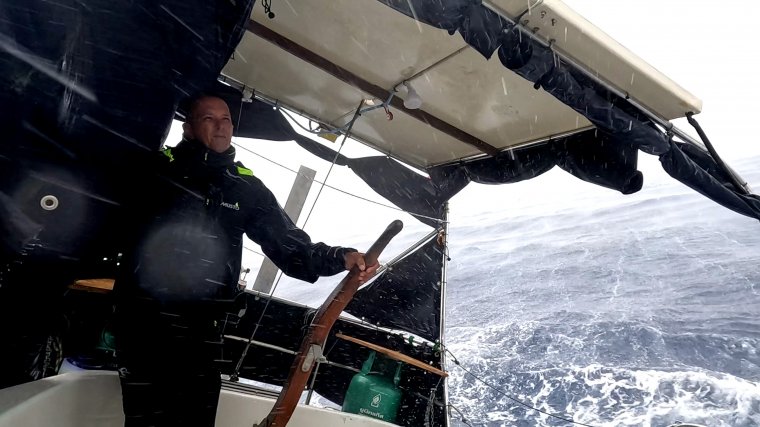
28 hours – 5 hours of smooth motoring, followed by 23 hours of misery. We packed the spinnaker away. The wind had blown every strength and direction except what the forecast said.
We entered Pulau Raya drenched and tired, but with a feeling of accomplishment and pride. We had made it. We hadn't killed each other. We did it together and stuck it out. This was a test and we had passed. So did Maia, she was the star of the passage and showed her pedigree.
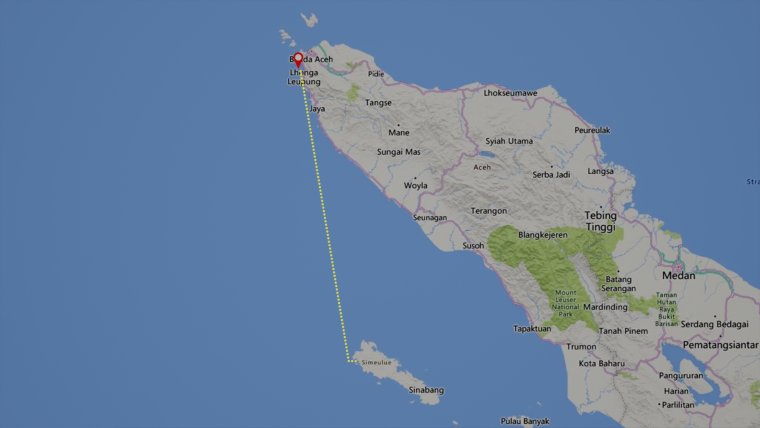
The next day we made our way back up to Seudu and it's welcoming protection. We needed to find a place to look at my laptop which was not powering up, visit the Tsunami Museum, provision, again find diesel, and generally, just rest.
Once this was done and we were ready, we made the pass through the Raya, around the northern tip of Pulau Weh, and back to Rubiah Island. Then on to Sabang to check out and plan our passage back over the Malacca Strait and on to Langkawi.
This would be a straight line and an expected two-night sail. We were able to sail half way in strong to moderate winds, at times reaching 9 knots of boat speed, and then motored the rest of the way, arriving in Langkawi late morning of Day 3...
While motoring, our prop was fouled by a length of discarded rope and the captain, me, had to jump in, at night, and cut it free. Fun times...
This time we encountered less traffic in the shipping lanes and only a handful of fishing vessels as we neared Malaysian waters. We wondered what the weather had been like in the Langkawi area as the seas were very confused and not very comfortable.
Total duration, including passages: 65 days
Distance covered: 1,300 nautical miles